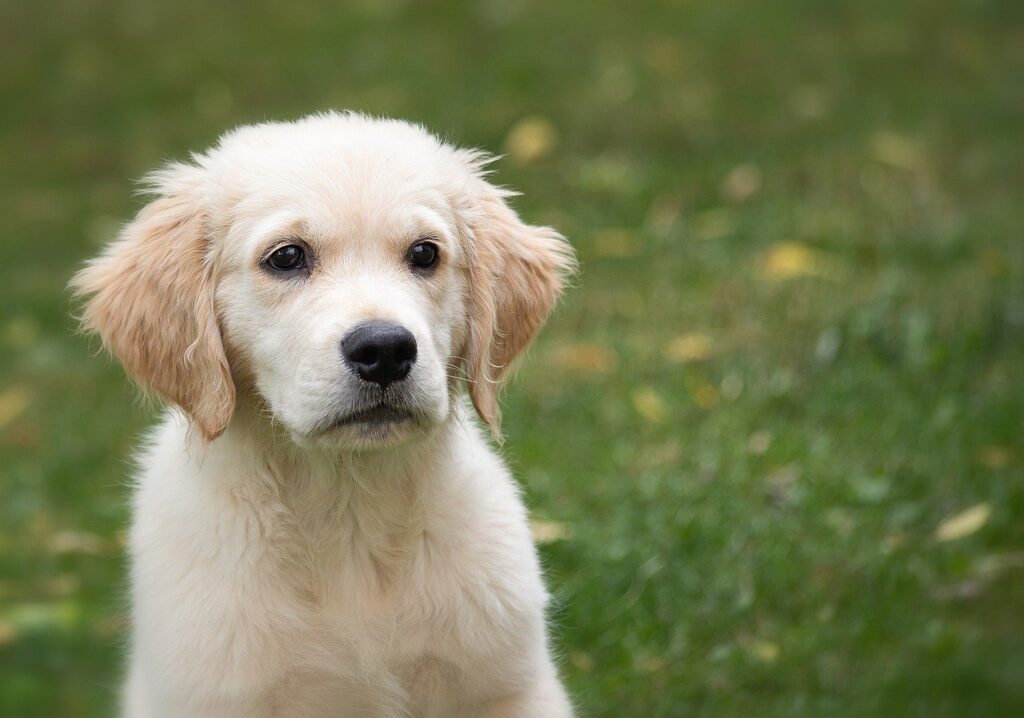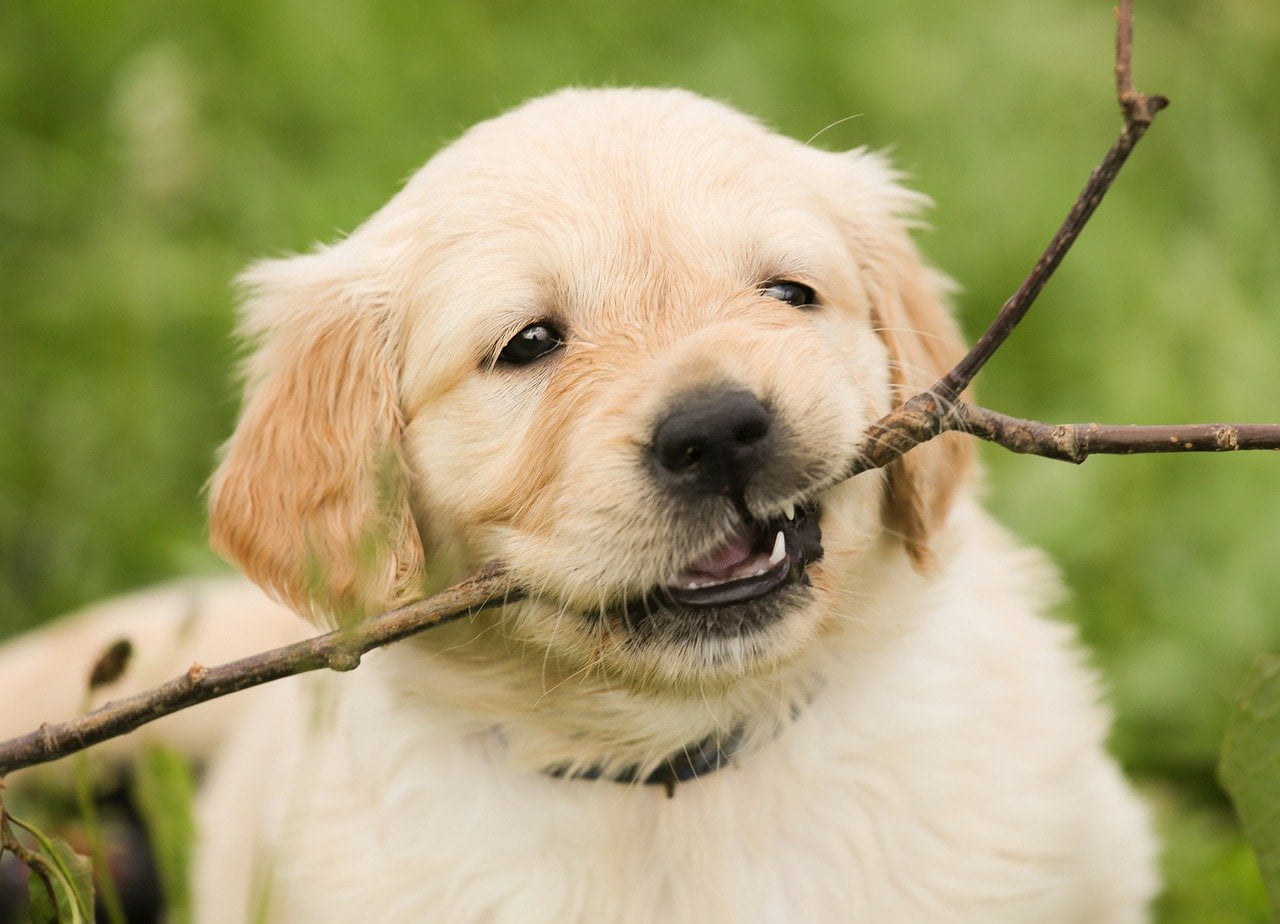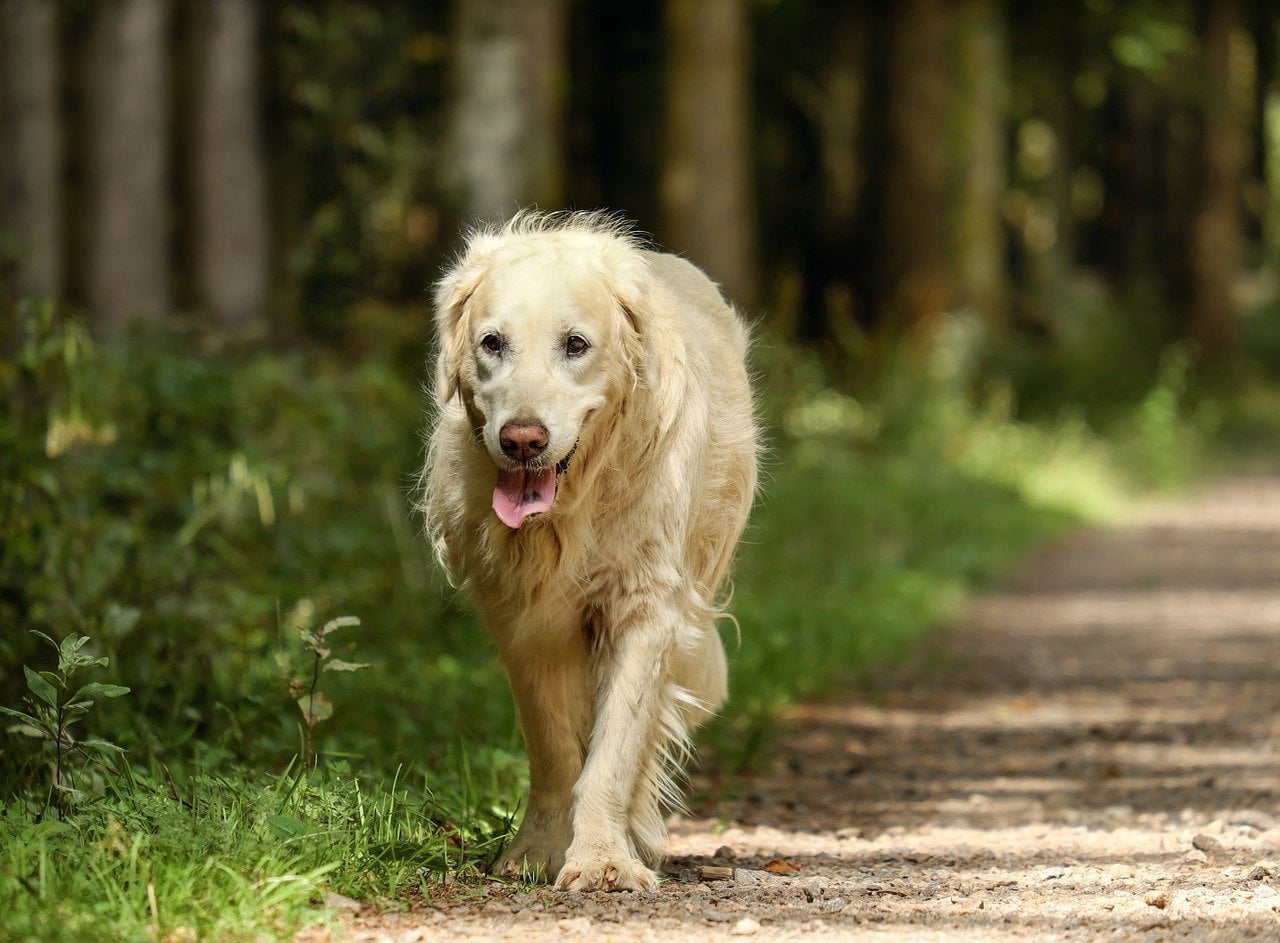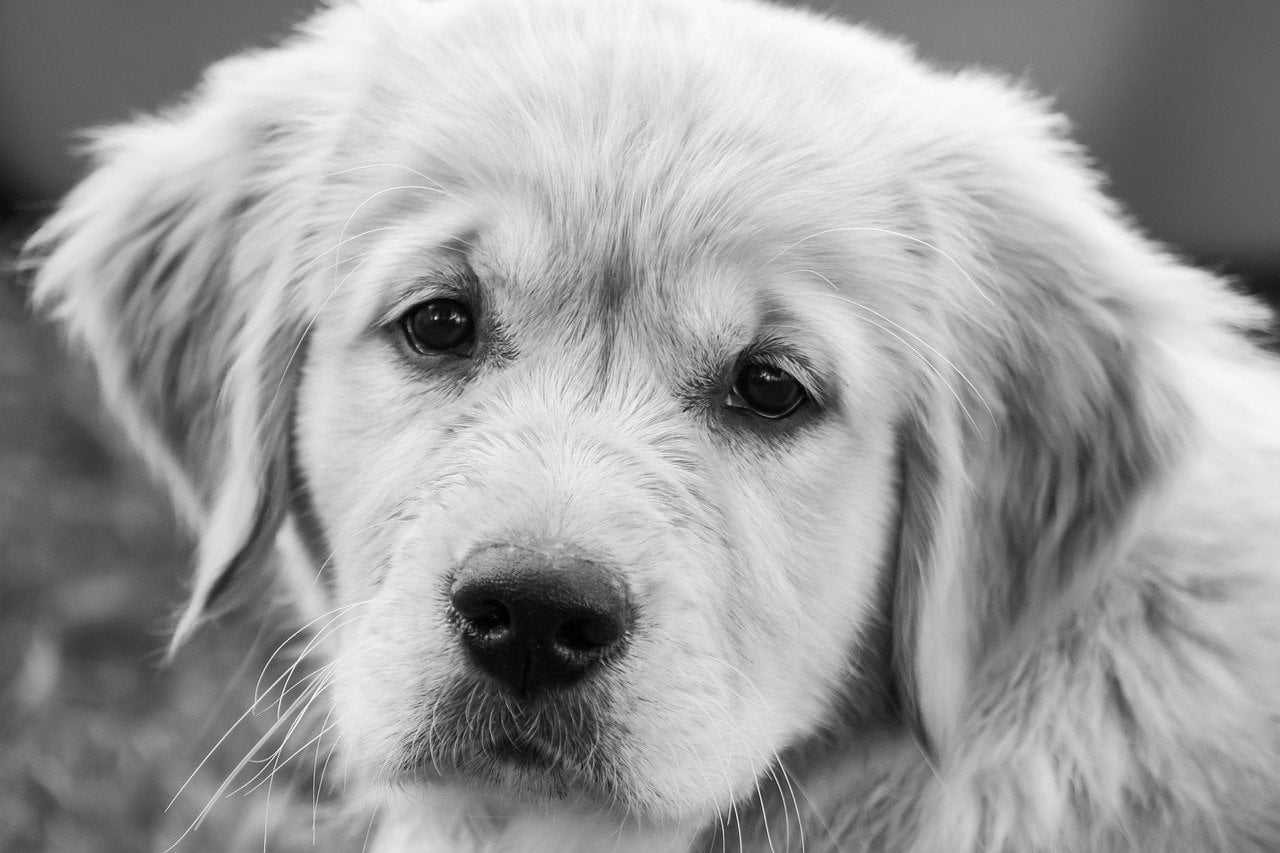
- Home
- Stud Dogs
Some of our most popular Stud Dog Breeds:
- Puppy Litters
- Dog Services
- Dog Breed Profiles
- Blog
- Contact Us
Golden Retriever Breed Profile

The Golden Retriever, often referred to as the Goldie, or Golden, by its many admirers, is the ideal family pet. Goldies, often confused with Labradors, are usually distinguished by their different coats. However, their main difference is their ancestry; Goldies are from Scotland and Labradors are from Canada. The Golden Retriever is first and foremost a people-dog, which thrives off the affection and contact of its family members. Incredibly tolerable of children and their antics, the Goldie also embraces good relationships with other family pets from hamsters to horses, if introduced properly. This dog has an idyllically balanced personality, calm but alert, sensible but playful, neither hyperactive nor lethargic. The intelligent Golden Retriever is notoriously easy to train, making it an ideal assistance or working dog. They love to please, but unlike a border collie or springer spaniel, it does not have an insatiable appetite for work, and is therefore happy to relax by your feet at the end of the day.
Typical Golden Retriever Facts:
Height: 20-24in, 51-61cm
Weight: 60-80lb, 27-36kg
Average Litter Size: 8
Life Expectancy: 14years
Good with Children: Exceptionally good
Kennel Club Classification: Gundog
Colour of a Golden Retriever:
Any shade from light cream to deep gold is acceptable, however over recent years, lighter shades have become more popular in the UK. Darker gold colours still dominate in the
US. Shades of red or mahogany are not permissible. Puppies are often born near white in colour, which tends to darker as they get older. A gradient of dark to light shades can be seen usually from the top (ears, neck and back) to bottom (undercarriage and feather)
Grooming a Golden Retriever:
The Goldie has a luxurious coat (much longer than a Labrador’s), that can be flat or wavy with a dense waterproof undercoat, extensive feathering on forelegs, and a beautifully thick plume on its tail. However, they shed excessively twice a year, and throughout the year at barely a lower rate.
To keep the Golden’s coat looking naturally glamorous, a good brush at least every other day is vital, and a thorough grooming session once a week. Slicker brushes are best used on the body, but be gentle on the undercarriage where there is not much undercoat. A comb should be used for the feathering and ears, and a wide, metal brush is useful for the plume. They do not really require any more bathing than any other dog, but every 2 months is ideal to keep the coat in tip top condition.

Golden Retriever Common Ailments/Health Issues:
The number 1 killer of Golden Retrievers is cancer. Due to this some experts are suggesting that the average life span could be down to 10-11 years. Because cancer in Goldens can be largely genetic, buying from a good, knowledgeable and careful breeder can reduce the chances of cancer in the later life of your Golden.
Canine Hip dysplasia (CHD) is a malformation of the hip joint, caused from a combination of genetic and environmental factors. Puppies from 8 weeks can be crippled, but other dogs may exhibit no symptoms their entire life. It is sensible before breeding that parents have their hips screened, and the scores are available to potential buyers. The scores show the chance of the puppies suffering from CHD.
Due to their floppy ears and the long fur surrounding them, Goldens are susceptible to ear infections. The ear anatomy is prone to trapping moisture and heat, a perfect breeding ground for bacteria, lice and infections to take hold. Regular cleaning and drying can considerably help this. Large amounts of wax that is very dark in colour, regular head shaking or rubbing on the ground and tilting the head to one side are all symptoms of an infection.
Goldens are not fussy eaters, have a big appetite and a bottomless stomach to accommodate. Without adequate exercise they are very prone to weight gain so controlled feeding is wise.
Temperament of a Golden Retriever:
It could be argued that this is the most friendly, willing, affectionate, gentle, patient, laid-back dog breed there is. It loves everyone: babies, children, pensioners, visitors, deliverymen, passer’s by in the street and other pets of any species. Often employed as a therapy dog, the Golden seems to have an ability to sense those with mental disorders or the very elderly, and has a tolerance threshold that cannot be reached.
Training a Golden Retriever:
Intelligent and eager to please, the Golden Retriever is an easy pleasure to train. They do however lack some focus that comes natural to other typical working breeds, but food is sure to keep them engaged. For any strenuous training, it is vital that the Golden is naturally enthusiastic about the activity, otherwise it’s like trying to get a cucumber to dance.

Exercise for a Golden Retriever:
The Golden is happy to sleep for 10 hours or walk for 10 miles, but they do not have a naturally athletic body, so regular exercise is vital to keep them fit. Also prone to weight gain thanks to their unfussy appetite, two 30 minute walks per day is essential, one hour for each walk is ideal.
History of the Golden Retriever:
The Golden Retriever is descendant from the Flat-coated Retriever, which it now overshadows and has largely replaced in popularity. In 1865, the man who would later become Lord Tweedmouth, designed a breeding plan to create the perfect gundog on his Scottish estate near Inverness.
A Brighton cobbler owned a litter of black wavy coated retrievers, in which there was a single yellow one. Tweedmouth purchased this puppy, called Nous, and mated him three years later with a Tweed Water Spaniel bitch named Belle. Out of their litter of four yellow puppies, Cowslip was selected and mated with a Red Setter, and a Tweed Water Spaniel. The Water Spaniel ancestry explains the modern Golden Retrievers love for water. The offspring of these two litters were bred back with black wavy-coated Retrievers. The puppies that resulted from this were a chocolate box of variety, from pure black to light cream. The golden puppies were selected and bred together, creating the foundation stock of the golden retriever. However it was originally named the Flat-coated Retriever, Golden, and it was registered under that name with the Kennel Club in 1903.
First exhibited at a dog show in 1908, 1911 saw the Golden Retriever Club being formed, and it was classed as a separate breed being called the Yellow or Golden Retriever. Since dogs the colour of the yellow Labrador (that was gaining in popularity as a working dog at the same time) were not being produced, the ‘Yellow or’ was dropped from its title, and Golden Retrievers in the colour from cream to golden were only acceptable.
The Golden Retriever made its first appearance in North America at the end of the 19th century, and in Canada in 1881, it finally reached the United States in 1890, but wasn’t accepted by the AKC until 1932. It spread right around the globe and is now one of the most internationally recognised of all dogs.

Famous Golden Retriever dogs:
Air Bud – 1997 film about a Golden Retriever who could play basketball. Sequel Air Bud: Golden Receiver 1998
Snow Buddies – 2008 film starring five golden retriever puppies that take part in a thrilling dog sledge race across Alaska.
Lucky – In the several Dr Dolittle movies.
Shelby – The golden retriever in the TV series Smallville.
Isabella – A golden retriever at Safari Zoological Park, made famous for nursing and raising three white baby tiger cubs that had been rejected by their mother.